Interview by Göksu Kunak in Berlin // Friday, Apr. 22, 2016
A woman enters the dark room and immediately leaves the space giggling. Obviously, she felt uneasy about the naked butt, being rhythmically yet gently spanked. The video ‘You Are Boring’ (2015), by artist and writer Vika Kirchenbauer, plays with exercises of looking and being looked at in relation to queer representational politics. Whether analyzing the screen of a drone pilot or the gaze of an art guru, the artist draws attention to neo-liberal economics of space and certain gestures of bodies. Her work is strongly influenced by Édouard Glissant‘s notion of ‘opacity’.
Besides texts and video works, Kirchenbauer is working on her new music project ‘COOL FOR YOU’, which will be performed on May 22nd at nGbK as a part of Feminist Training Camp, No Play.
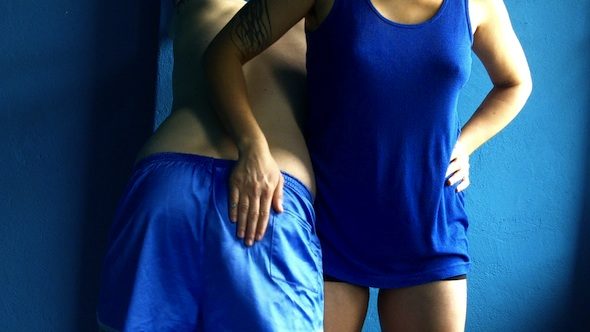
Vika Kirchenbauer: ‘Convenient, Sacred, Blessed’, Filmstill, 2015 // Courtesy of the artist
Göksu Kunak: All of us, in one way or another, have been faced with a comment about our bodies. As a transgender artist, you have been inevitably using your body as a medium of your works and in order to problematize the gaze. How do you feel when others directly or indirectly feel that they have the right to remark on your body or your sexuality?
Vika Kirchenbauer: I feel uneasy about the term “transgender artist” as it reflects exactly the inescapable reduction any member of a minority faces – also within the art world in particular. ‘Being an artist’ operates within such economic and structural conditions of uniqueness that all biographical and/or identity aspects are made productive as means of competitive differentiation.
My experiences within society surely have strong impacts on my thinking, psyche and affective reactions, thus also on the art I produce. Nevertheless, they are only first impulses from which I then try to examine wider structures. I am very fond of Édouard Glissant’s ideas around ‘opacity’ and the right not to be understood. As much as his philosophy is informed by experiences of racism and close analysis on the psychological and social repercussions of colonialism, his ideas address even deeper and broader structures. I don’t believe in comparison as a rhetorical tool or political strategy, so without wanting to equate or universalize any of these distinct situations, I think he works out in great clarity the violence inherent in understanding, in measuring the other by one’s own scale. When understanding the other becomes the basis on which they are either legitimized or delegitimized, that very notion of understanding is what builds and solidifies hierarchies.
The gaze obviously plays a fundamental part in this, so a lot of my work focuses on unmet gazes and the particular conditions of affective realities and possibilities for judgment they entail: in psychiatry, art spectatorship, the workplace or modern warfare.
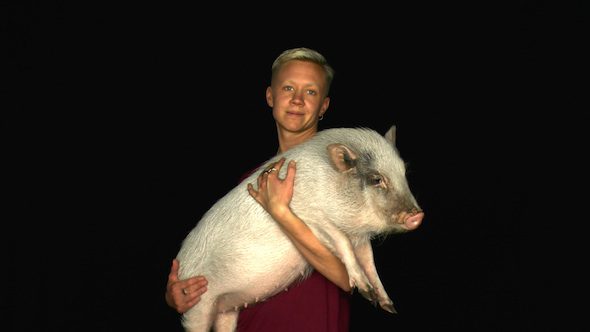
GK: In an interview, Lydia Lunch refuses to be called a “woman artist” and draws attention to the problem of gender in our society. Then she continues: “I think the whole problem with Western reality is the sexual segregation that happens to children by their parents.” That’s the exact same fucked-up situation you address in ‘Like Rats Leaving a Sinking Ship’ (2012). The normalization of a body; the memoir of Mrs./Mr. Kirchenbauer is narrated through medical reports. Yet, the images are not transgressive at all, on the contrary frustratingly vanilla, as you use family videos from several archives.
VK: The larger part of it is actually shot by me, in a style that would show no distinction from family footage, neither aesthetically nor temporally. The way in which family videos are performative, flat and staged bears strong resemblance to the way in which memory and unambiguous biographies must be convincingly performed within the psychiatric, legal and medical field: in respect to transgender biographies as much as to those of political refugees, for instance.
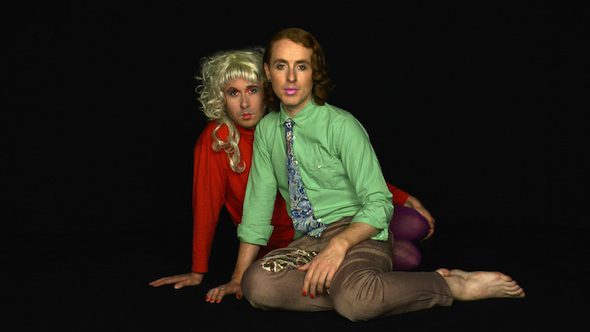
Vika Kirchenbauer: ‘You are boring!’, Filmstill, 2015 // Courtesy of the artist
GK: In ‘Please Relax Now’ (2014) the body is not determinate. What was the reason to shoot that way?
VK: My social experience of passing offers anything from cis dyke to trans woman to trans guy to effeminate cis fag, so I am not unfamiliar with looking at myself through the eyes of others. In fact, I believe that is a very significant experience of self-awareness that comes from living life as a transgender person. Everyday life doesn’t usually hold the possibility of returning those gazes in any safe way, yet when I take on the role of an artist with all the authority inscribed into that position, I am suddenly able to return that gaze. Especially within institutions that accommodate audiences – often from a particular class background and social position – that are perhaps less used to their gazes being challenged or their role discussed. This can create quite ‘transformative’ situations.
The spectator only sees a headshot of me while the body attached remains a mystery. In direct address I invoke sexual imagery and promises of pleasure, images that are somewhat inescapable for the human mind to produce after they have been verbally suggested. The spectator can of course project whatever body they prefer onto my presence ‘off screen’, albeit not without some doubt about what actually is. Most people’s sexual taxonomy is very much based on sexual features and genitals, so the ambiguity of not knowing and not understanding can create a lot of tension in the spectator.
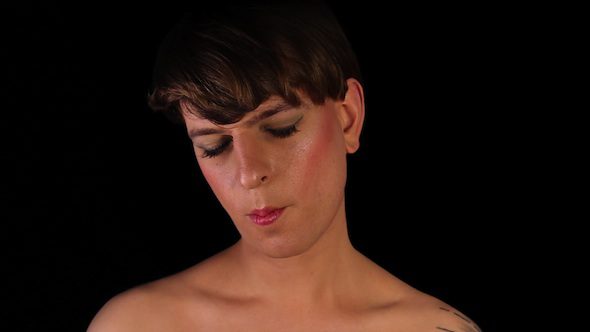
Vika Kirchenbauer: ‘Please relax now’, Filmstill, 2014 // Courtesy of the artist
GK: Why do you think some people from the audience shouted at the video? What was it that made them so aggressive?
VK: Particularly that, I would say. Because of the not knowing whether or not their understanding of their sexual preferences would even allow them to be aroused by me. And additionally, people might feel that as a performer I crossed their boundaries by nonconsensually looking at them and trying to stimulate them.
GK: “Freaks and abnormals need to suffer. Nothing else would make any sense to them. But there is a liberty in having no past…” These sentences from the aforementioned video recall Freak Theory of Queer Art by Renate Lorenz, in which the artist celebrates this freakiness and recommends proliferating this image by also using different temporalities. You have been challenging the gaze of the audience − especially in the course of looking at a queer body – as in the 3D video installation ‘You Are Boring!’ (2015) that is being shown in n.b.k. Berlin, as a part of the exhibition Where Are We Now. A play with the fetishization of the queer body is going on and you embrace it and in a way, mock the gaze. What do you think of the possibilities of the freak body’s power against exercises of normalization?
VK: What united these performers though is a shared experience of being looked at on and off stage due to certain social markers that make them other – and also a shared experience of being tokenized, exoticized or fetishized within cultural production exactly because they bear these markers.
But going back to ‘the freak body’s power’. By all means, I am not an optimist. In my work I try to look at the relatively recent incorporation of queer and transgender art into more professional and institutionalized fields through the lens of the Experience Economy which mirrors in museums’ increasing focus on the experiences provided to the spectator; happening alongside a more general eventization of museum culture. So if anything, I question my own role and complicity in all of this. One’s own class background or gender otherness should not be made productive in order to feel like the eternal underdog, it is necessary especially then to reflect upon the relative privilege and personal autonomy – rather than solely the undeniable relative precarity – one holds in the present moment that comes as part of the profession one practices. Artists that belong to certain social groups function as means for institutions to assimilate into their walls what is outside the institutions’ direct reach, to again create a safe place for consumption while simultaneously offering just enough thrill for the spectator. A deal that is often beneficial to all parties involved, frequently only with the sole exception of the social group the artist claims to represent. Wouldn’t it be cynical if I indiscriminately celebrated my mild professional success as a triumph of transgender visibility? Wouldn’t it buy into an American Dream-like “you can make it” narrative that is harmful on a broader level because it tends to overlook more complex forms of economic, social and cultural exclusion of those masses of bodies who find it hard to be contracted for any kind of job that contains interaction with the public − like salespeople, waiters, etc.?
In an art world where at least basic knowledge of queer and gender theory is expected in order to belong, it is true that I am challenging that gaze, that I am interested in what happens when these bodies come too close, when 2D turns into 3D so to speak. At the same time though, I find that the ways in which particularly queer art is presented in museums create very conflicting messages around ideas of belonging. While, on one hand, experiential value and affective reaction – of all kinds – and a certain promise of proximity is central, on the other hand it also relies on a reflex of representation that almost creates a futuristic vision of that new, freaky human to which you – dear spectator, queer or not – cannot belong. I think both of those tightly interwoven tendencies deserve critical examination (read performance artist and writer Mysti and I discuss the ‘queer picnic’ in contemporary queer community film production).
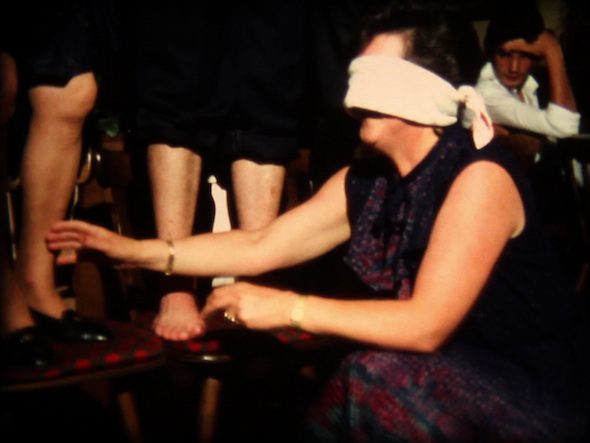
Vika Kirchenbauer: ‘Like rats leaving a sinking ship’, Filmstill, 2012 // Courtesy of the artist
GK: ‘Internal Market’, which makes up part of the three-piece installation Kingdom Come (2014) with Martin Sulzer, deals with reproductive labor in post-Fordist society. Recently, I read that scientists could fertilize an egg without sperm: sperm-free fertilization. I was contemplating – remembering Huxley’s Brave New World − whether it can be a revolution for women or vice versa: women being the reproduction machine and men not having any responsibility at all. Considering the economy of reproduction and the values of heteronormativity, I, personally, find this phenomenon seriously scary…
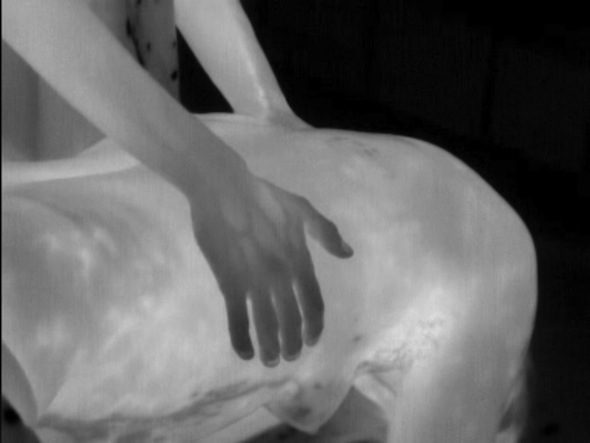
Vika Kirchenbauer: ‘Cool for you, she whose blood is clotting in my undewear’, Filmstill, 2016 // Courtesy of the artist
VK: I love Shulamith Firestone and the ideas around reproduction she lays out in The Dialectic of Sex (1970). Unless technology makes it possible that the embryo can grow entirely outside ‘the female body’, people will always be reduced to biological features; and unless the model of the nuclear family is overcome, there can be no equality and justice in a feminist sense. Sadly though, especially when it comes to her utopian ideas around technology and reproduction, it’s important we keep in mind that we live in a world of such extreme inequity that the availability of such technologies would be strongly restricted to the most privileged people. So, ultimately, I can’t really give any significant opinion towards the matter, but I am glad that I, personally, hold no stakes whatsoever in the business of reproduction.
GK: Until your latest video ‘She Whose Blood Is Clotting In My Underwear’ (2016), the body has always been crystal clear with its colors and flesh. However this time, the body is transforming into a virtual one. Why? Could you tell more about that video?
VK: I made that video using an infrared camera for my music and performance project COOL FOR YOU. In my essay ‘Infrared Dreams In Times of Transparency: The Love Life of Drones and Other Western Cyborgs’, I investigate the global drone system and its insistence on total looking in terms of how technology enhances human capabilities within the structural setup of an already unmet gaze. Now in ‘She Whose Blood Is Clotting In My Underwear’ I utilize these means of enhanced vision to discuss intimacy, the body and physical relations between bodies. Unilateral staring makes part not only of modern warfare, but also of online dating for instance. The idea of transparency has found ways to diffuse into nearly all realms of life. Knowledge about the other is the currency that economies of love and war operate on. Given that an image/reality split has already become our every day’s natural task, I am interested in working with technologies that register more than what the human eye can capture as a form of enhanced voyeurism.
Exhibition
N.B.K
Group Show: ‘Where Are We Now’
Exhibition: Mar. 5–May 1, 2016
Chausseestraße 128/129, 10115 Berlin, click here for map
NGBK
Group Show: ‘No Play’
Exhibition: May 20–Jun. 24, 2016
Oranienstraße 25, 10999 Berlin, click here for map
Writer Info
Göksu Kunak is a freelance writer based in Berlin. Besides being one of the editors of mono.kultur, she contributes to Ibraaz as an Editorial Correspondent. Soon, she will be writing her PhD on queer chronopolitics and performance art/contemporary dance.


























